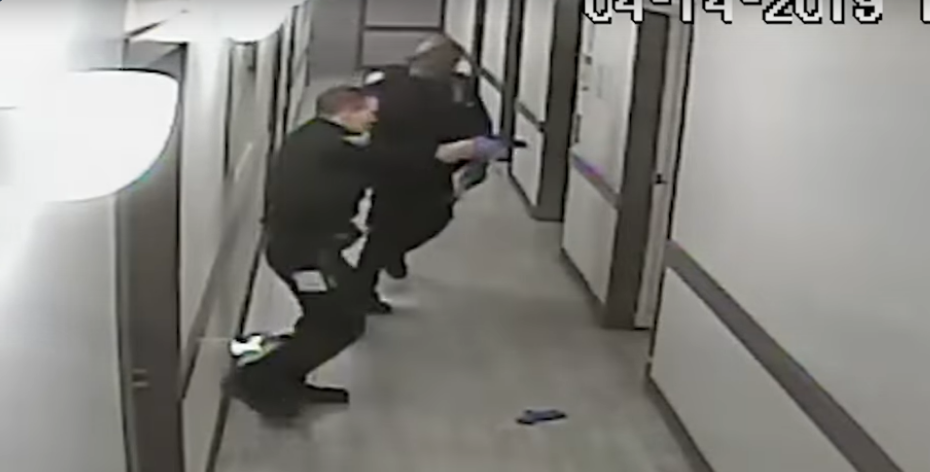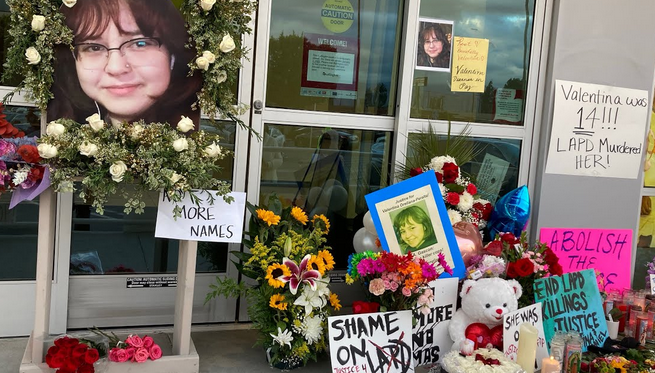And even if we need to talk about pathology, where and to whom do we do it—to a cold and uncaring camera, to White people and 1.2 billion TV watching people in the world who see nothing but negatives by which to judge or engage us?
[Commentary On CNN’s Special Series On Blacks]
Whatever benefits one believes will result from the extended dissection and discussion of Black pathology in the TV “docu-drama”, “Black in America” and whatever its producers promised and pretend to accomplish, increased public insight, community initiative and “patient” involvement are not among these.
Indeed, it is difficult to imagine that after so many years of pretentions and failed practice that even the media could be so submerged in self-delusion that they would believe that they are doing anything but repeating and reinforcing a racial catechism of pathology, impotence and impossibility. Even with its marketable subthemes about “remembering and retaining the dream”, offered as a hook of hope for Blacks seeking eventual “acceptance”, it is still little more than an old and outdated product in a new and updated technological package.
Thus, within the glass-house media-crafted mix of thinly-layered dream, thickly-sensed dread and therapeutic tell-all drama, there it all was again: the absence of things hoped for; the presence of things expected; and the evidence of things seen and supposed to be clear and compelling proof of the pathology and pathetic character of a people decidedly against itself.
Again, there was the reality-constructing Black slice-of-life line-up of: religious leaders; concerned academics; committed activists; probing professionals; weary workers in the vineyard of trouble times; girls and women tragically interrupted; boys and men pathetic victims and predator-prone victimizers; the music, movie and money makers, and a local-color sample and assembly of everyday people waiting for a sign and wondering with Alfie and other Whites “what’s it all about?”
Some will say “we need to get the message out there”. But what message, where and to whom? Will it be a message of hope or one of horror; evidence of possibility or pathology; highlighting people doing wrong or those doing right; reinforcing stereotypes or raising up models of human excellence and achievement against all personal and social obstacles and odds?
And even if we need to talk about pathology, where and to whom do we do it—to a cold and uncaring camera, to White people and 1.2 billion TV watching people in the world who see nothing but negatives by which to judge or engage us?
Or should we speak truth and possibility to those who are dealing with these problems everyday and need more data, resources and support in their daily work and to the people who must be engaged and aided in their own uplift and liberation?
And what if, instead of this perpetual media parade of evidence of pathology, there were media conversations about community projects, programs and people that do the hard, heroic and difficult daily work of stemming and turning back the tide, that serve with impressive competence and commitment and are really and self-consciously committed to leave no child, women or man behind?
Also, what if attached to these media conversations were fundraising efforts to provide increased resources to these programs and projects and aid them in building on their best ideas and practices in assisting our people in their own efforts to transform weaknesses into strengths, clear free space in community and society, live good and meaningful lives and leave a meaningful measure of gain and good for their children?
It is said also that showing the negative side of Black life is “keeping it real”. But that’s a deficient, degraded and degrading concept of reality in which the lowest level of Black life is posed as the model and an elevated and achieving life is viewed with disbelief and disdain. In such a context of conceptual confusion, self-destruction and distortion, thuggin and thinking low-life are posed as real, and loving each other, commitment to learning and living a good and meaningful life are seen as unreal and perhaps unreachable.
The established order feeds on and funds such a conception; producing, promoting and profiting from images, music and conversations of self-condemnation, self-degradation and self-mutilation in old and new ways they’re still working on.
It is said there is a need for a paradigm shift from talk of “victimization” to opportunity, given the Obama prospect which it is rumored will eliminate all problems and claims of racial justice. But conditions create consciousness and the call for a new way of thinking, requires a parallel and simultaneous call and action to alter and end the situation that cultivates and even compels that thinking. Aware of its role as victimizer, the established order does not want us to talk about victims, damage done and justice due.
Thus, it tries to redefine our rightful social justice conversation as victimhood conversation. But social justice is at the heart of a good society and is not wished or waved away. Black people, as poll after poll shows, are aware that they are not being treated justly, but the issue is always, what is to be done?
Surely, it involves more than the magnified and manipulated hope that the “ascension” or election of one person will miraculously empower a whole people, lift them up beyond the raw and subtle racism which appears in both ragged and rich disguises. Indeed, as we’ve always said, there is no remedy except thru resistance, no real strategy that does not require struggle and no way to repair injuries and injustices that afflict our lives, except by repairing the world in the process.
For we are our own liberators and a people that cannot save itself is doomed to eke out its life in the marginal and minor spaces of others’ lives. Thus, there is no alternative to taking responsibility for our own lives. Yes, the oppressor is responsible for our oppression, but we are responsible for our own liberation. And part of our being responsible is to hold the oppressor responsible for the wrong done and the justice due.
As we’ve argued before, we are injured physicians who must and can only heal, repair and transform themselves by healing, repairing and transforming society and the world. And given the radical nature of this awesome effort, our oppressor cannot be our teacher, will not televise our work or welcome us in Washington to salvage his image and give the system a new lease on its problematic life.
As Fanon says, it is a question of our engaging “on a vast scale in enlightened and fruitful work”, as men and women conscious of our tasks, committed to our struggle and confident every dawning day will “find us firm, prudent . . . resolute” and relentless in the pursuit and expansion of African and human good in and for the world.
Dr. Maulana Karenga, Professor of Africana Studies, California State University-Long Beach, Chair of The Organization Us, Creator of Kwanzaa, and author of Kawaida and Questions of Life and Struggle: African American, Pan-African and Global Issues
[www.Us-Organization.org and www.OfficialKwanzaaWebsite.org].
(First Published in The Los Angeles Sentinel]
To comment or to subscribe to or advertise in New York’s leading Pan African weekly investigative newspaper, or to send us a news tip, please call (212) 481-7745 or send a note to [email protected]
Also visit out sister publications Harlem Business News www.harlembusinessnews.com and The Groove music magazine at www.thegroovemag.com
“Speaking Truth To Empower.”











